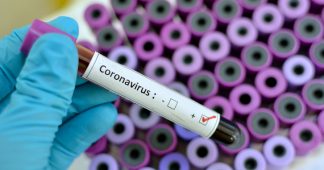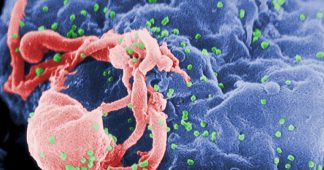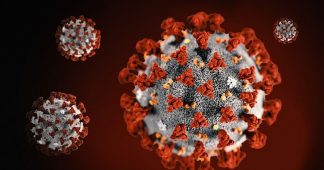By Gregory D. Koblentz
February 21, 2020
In 2017, the virologist David Evans made headlines when he used synthetic biology to recreate the extinct horsepox virus, which is closely related to the virus that causes smallpox, a disease eradicated in 1980. Evans and his team, ordering the genetic material they needed through the mail, reportedly spent $100,000 on the research, an amount that seems small given the momentous implications of their work. “No question. If it’s possible with horsepox, it’s possible with smallpox,” German virologist Gerd Sutter told Science magazine in a press account of Evans’s work. A number of biosecurity experts and even The Washington Post editorial board joined him in voicing their concerns. Given the reaction Evans met, one might expect the news that yet another microbe related to the smallpox virus had been synthesized to set off similar alarm bells.
Yet when the American biotech company that funded Evans’s horsepox work, Tonix Pharmaceuticals, announced this January that it had successfully synthesized just such a microbe, vaccinia, no one seemed to take note.
Since the World Health Organization eradicated the smallpox-causing variola virus from nature, the only known samples of it have been held in two high-security facilities in the United States and Russia. But developments in synthetic biology, a field which includes the art and science of constructing viral genomes, have made it possible to create the smallpox virus in a lab. While there’s no evidence that anyone has done that yet, as Tonix’s work indicates, researchers are inching incredibly close to that line. Before it was eradicated, smallpox was responsible for 300 million deaths in the 20th century. The re-introduction of the disease—through negligence or malice—would be a global health disaster. As I wrote in International Security 10 years ago, global biosecurity can be endangered not just by biological warfare and bioterrorism, but also by laboratory accidents with dangerous pathogens.
Tonix announced the new synthetic vaccinia virus quietly, burying the news in a press release for a poster that the firm presented at the American Society for Microbiology’s annual biodefense science and policy conference. The poster focused on the progress the company was making in testing Evans’s synthetic horsepox virus for use as a vaccine against smallpox, which Tonix calls TNX-801. Current smallpox vaccines are based on live vaccinia virus that is grown using cell culture technology. Tonix’s poster also references another smallpox vaccine candidate the company is testing, one based on a synthetic version of the vaccinia virus that Tonix is calling TNX-1200. While the vaccinia and horsepox viruses are not themselves serious threats to human health, there are several reasons why this new development in synthetic biology is problematic.
Tonix has apparently ignored the concerns that many biosecurity experts, including myself, have raised. Given the close genetic similarity among orthopoxviruses like the horsepox, variola, and vaccinia viruses, the laboratory techniques that can be used to create one can also be used to produce others–most worryingly, the smallpox-causing variola virus. Indeed, Evans has said as much himself, once pointing out that his research “was a stark demonstration that this could also be done with variola virus.” Evans’s lab used the same technique to produce the synthetic vaccinia virus for Tonix as it did to synthesize the horsepox virus.
Unlike in other cases of controversial dual-use research, the risks posed by the synthesis of orthopoxviruses are not offset by any significant benefits. In 2018, I wrote that the benefits of using Evans and Tonix’s horsepox virus as a smallpox vaccine rested on a weak scientific foundation, and an even weaker business case. The case for synthesizing vaccinia is more dubious. Tonix cannot claim that synthesizing the vaccinia virus was the only way to obtain it. Unlike horsepox virus, which went extinct in the 1980s and for which the only known sample is held by the Centers for Disease Control and Prevention, vaccinia is widely available from multiple sources.
The business case for a new smallpox vaccine based on novel platforms such as synthetic horsepox or synthetic vaccinia is even weaker than it was a few years ago. One of Tonix’s key talking points about the vaccine based on the synthetic horsepox virus is that it would be safer than older vaccine varieties. Since the company’s synthetic vaccinia strain in the TNX-1200 vaccine is “very similar” to the vaccinia strain used in one of the older, so-called second generation, smallpox vaccines, it’s hard to see how this new synthetic vaccine could have an improved safety profile. Further complicating Tonix’s case is that there is now a newer and safer third-generation smallpox vaccine available. Last year, the US Food and Drug Administration licensed Bavarian Nordic’s JYNNEOS vaccine, which is based on a non-replicating strain of vaccinia. This vaccine doesn’t damage the heart, unlike second-generation smallpox vaccines, and can even be given to people with compromised immune systems. Tonix will likely find it difficult to attract the venture capital or government funding needed to win approval and licensing for either of its synthetic smallpox vaccine candidates.
Given the current level of interest among scientists in using orthopoxviruses, as well as related pox viruses, to develop new vaccines and cancer therapies, there is already a well-established foundation of laboratories that could use synthetic biology to further their research. Indeed, Evans had previously expressed his hope to synthesize genetically engineered vaccinia strains to develop new anti-cancer treatments. As evidenced by the relatively muted reaction to Tonix’s synthetic vaccinia announcement, there’s a strong risk that orthopoxvirus synthesis could gradually be viewed as normal, legitimate research. It’s not difficult to imagine the emergence of a global cadre of labs and scientists capable of developing synthetic versions of the infectious smallpox virus.
While orthopoxviruses are among the most complicated and expensive viruses to synthesize, a World Health Organization scientific advisory panel found that “a skilled laboratory technician or undergraduate students working with viruses in a relatively simple laboratory” could be up to the task. The genome sequence of variola virus has already been determined and is available online. The key ingredient needed to synthesize a viral genome is DNA. In the case of variola virus, what’s required is about 186,000 base-pairs of genetic material. And there is now a global industry of DNA synthesis companies that produce and sell DNA for use in biomedical research and biomanufacturing.
As described by the World Health Organization panel, once a lab has acquired the necessary DNA molecules, it would need to assemble the material into a complete genome and use a helper virus to generate an infectious variola virus. By my count there are at least 100 laboratories around the world with the expertise to do so.
Worryingly, there are few meaningful national or international safeguards to prevent access to the DNA needed to synthesize the variola virus. According to a 2019 global survey of biosecurity practices by the Nuclear Threat Initiative, a nonprofit that tracks biosecurity risks and other threats, no country requires the companies that sell synthetic DNA to prevent “questionable parties” from acquiring materials. The think tank also found that less than 5 percent of countries regulate dual-use research, such as the use of techniques that might also be used to synthesize dangerous viruses.
The only positive development in this area in the last few years is that the International Gene Synthesis Consortium, a group of DNA synthesis companies that screens customers and their orders, has prohibited its members from synthesizing gene sequences unique to the smallpox virus genome. Unfortunately, the consortium represents only 80 percent of the global DNA synthesis market, leaving an uncomfortably large number of companies operating without any sort of regulation on what they can make and who they can sell it to.
The loosely regulated market for synthetic DNA, the normalization of synthetic orthopoxvirus research, and a large number of capable facilities and researchers creates an environment in which a rogue state, unscrupulous company, reckless scientist, or terrorist group could potentially reintroduce one of the worst microbial scourges in human history.
Unless world bodies, national governments, and scientific organizations put in place stronger safeguards on synthetic virus research, the next press release touting a new breakthrough in synthetic biology might announce that an unknown scientist in an obscure lab has successfully resurrected the smallpox virus.
Published at https://thebulletin.org/2020/02/a-biotech-firm-made-a-smallpox-like-virus-on-purpose-nobody-seems-to-care/
Also read
‘Where was your patient zero?’ Chinese official speculates AMERICANS may have infected Wuhan at army games & calls to ‘come clean’











